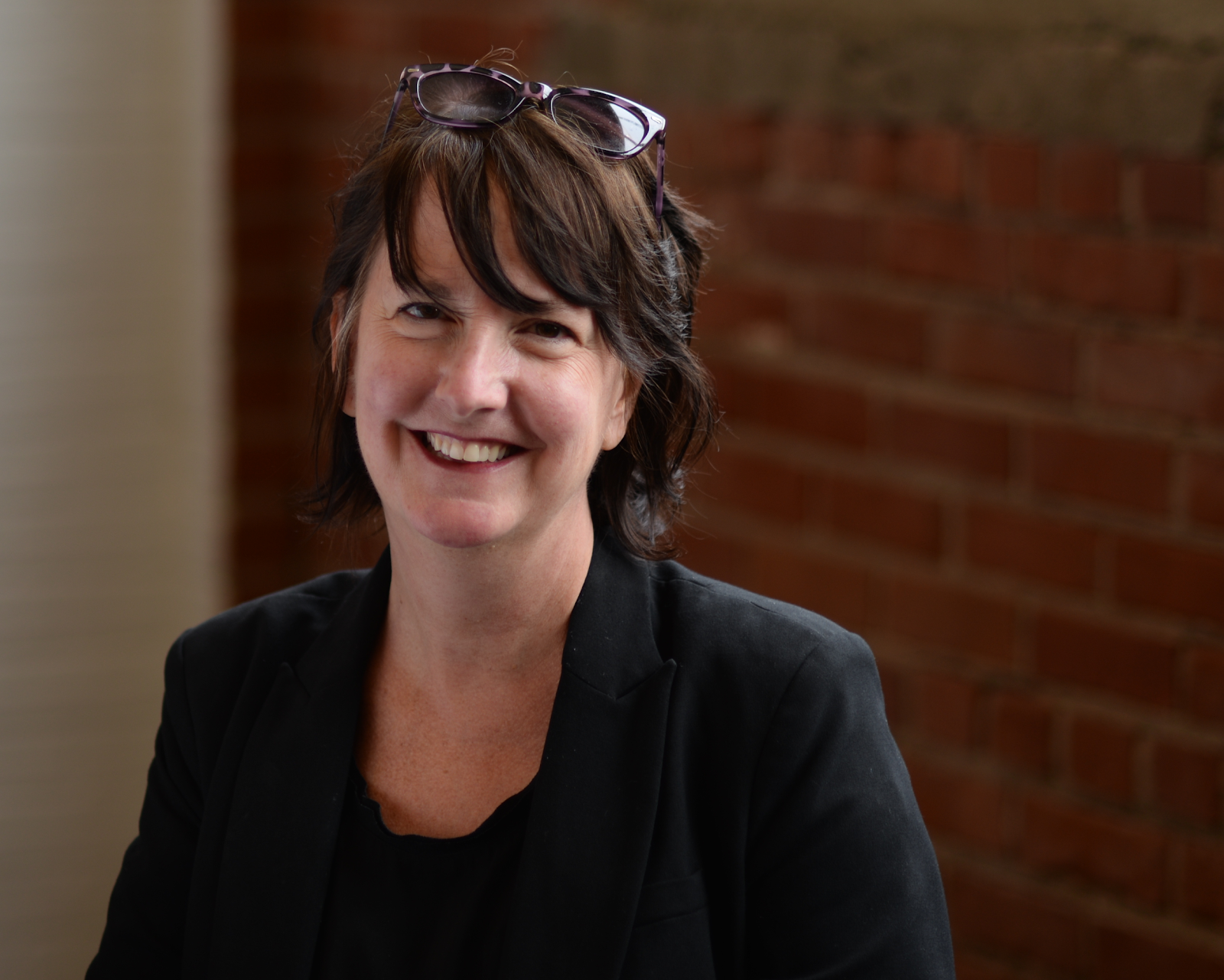HIRING PROBLEMS & YOUR SOLUTIONS
Armand Adkins, Guardslink
One of the most recurring problems in the security industry is finding and hiring qualified security officers. If there was a show of hands, I don’t think many members of CALSAGA would say hiring, when and how they want, is easy. It just isn’t. Building the team of security officers your company needs will require creativity as well as a rigorous process to search and employ the right people to service your existing clients and move your company forward.
We need to recognize that finding the right candidates is even harder for security companies than in other industries as those we select are expected to protect lives and properties. Qualities such as experience, fitness, and appropriate training are only a few of the things security companies look for from their pool of candidates. While there are endless in-house problems that get in the way of an effective hiring process (administrative time commitment, costs, etc.), the good news is, as hard as these problems might seem, there are practical ways to effectively tackle them.
Shortage of Candidates
Always surprising – even though the physical security industry is a long standing and established sector of our economy, the Service Employees International Union still records an annual turnover rate of 100%-300% for security officers. This means that security officers leave a job within 1 year and sometimes within their first four months in a new company. This makes the market very competitive for companies looking to hire security officers, with the demand typically higher than the available talents.
There have historically been three proven ways to get candidates, and now there’s a fourth new approach.
Method One: Get your job openings in front of as many potential candidates as possible to raise the visibility of your hiring needs.
This can take the form of job boards such as Indeed, Ziprecruiter, etc that will post your positions on their websites for a fee since they are able to draw a significant number of job seekers looking for work. The second, is a job ad in a physical or online circulars. Examples of these sorts of circulars are Craigslist or PennySaver USA. With job boards and circulars, you cast the net as wide as possible but you can never be sure of the response rate.
If your company takes the traditional route of job boards / employment ads, do you have a firm sense of the amount of money involved? Are you factoring the actual costs of posting, boosting, as well as the labor cost of resume reviewing, candidate communications, interviews, negotiation, and sometimes the added need to train, live scan coordinate and apply for a guard card license. All steps involve time, which means money.
Method Two: Those already in your circle of influence. This method includes adding career / job openings language or a dedicated page on your website for those already familiar with your company and coming to your site. In addition to just job openings, you may want to consider adding testimonials / testimonial videos from your existing security officers to share their positive views of working for your company. Your sphere of influence also includes asking your existing employees for referrals out of the goodness of their hearts or for an incentive. This is a solid approach to take with the exception that it limits the reach of your potential pool.
While this technique may seem like a bargain, you will most likely face actual costs in terms of referral bonuses as well as the unseen cost of limiting your reach to find qualified candidates if you are looking to grow your business.
Method Three: Traditional recruiters. Going with a standard recruiting firm is definitely an option if your company is in an immediate need for a position to be filled and Method One and Method Two have not panned out.
Using traditional recruiters really should be seen as a last resort as they greatly increase your cost to hire in terms of potentially upfront and certainly hourly rate premiums that you would be contractually obligated for. However, in a pitch, they exist.
New Method Four: There exists a brand new model for flat fee placement providers. GuardsLink is an example of one such service provider that has recently expanded its offering beyond online training and tracking to include hiring assistance. Qualified candidates that already have their unarmed or armed guard licenses can be presented to your company for interviews, and if you hire one or more of the candidates, you pay a relatively small flat fee per hire.
There is a cost per hire, but it is simple and transparent – no unknown return for money spent like in Method One, no limitation of your network of people familiar with your employees and company like in Method Two, and no expensive hourly rate premium like with traditional recruiters. However, your company would need to be willing to try new business providers, and not all companies are open to expanding options from what they already do.
Each of these four methods can find you candidates, it is simply up to you if you choose one or more of the methods to implement in order to improve your odds.
Making the offer
It is one thing to have found the perfect fit for the job, it is a different task to get to a mutually agreeable “yes,” resulting in potential time wasted on negotiations.
To solve this specific hiring problem, the wage range should be included in your Employment Postings. This will streamline the candidate pool applying to fit your budget as those that seek different rates of pay will self-select and not apply. This is a huge time saving as you and your staff won’t need to spend your time reviewing resumes, contacting to coordinate interviews, interviewing and discussing the position with someone who will not be accepting the job for monetary reasons.
A completely different approach that some employers have been known to use is to let each candidate freely lead the negotiation phase. This will give you an insight into each candidate’s expectations. If there are unrealistic wage expectations for the position, this may serve as a warning flag that despite ultimately accepting the position, this new hire may become part of the turnover statistic and you enter into the employment relationship with eyes open.
Not enough time to make decisions
No good hiring process is done in a rush. Adequate time is needed. To tackle the problem of time, ensure that you have a good work policy that allows your staff to inform you ahead of resignation. This will give those involved in searching for new hires ample time to run the hiring process. In urgent situations, even a short notice or resignation will give you the breathing room to temporarily cover work shifts with your existing employees.
Side note, the company culture that encourages some amount of resignation notice is a self-fulfilling prophecy. If you honor resignation periods, employees are more likely to give you sufficient resignation notice. However, if you accelerate the last day of a security officer who gives advance notice of resignation, you are setting an unspoken company standard and few employees in the future will provide the same resignation notice for fear of impacting their final checks. As CALSAGA is made up of mainly fellow employers, it is a hard decision whether to honor or not honor the resignation notice period, and no one can tell you the right balance, but you.
Also on the subject of time to vet candidates, it may make sense to have a process in place to be continuously searching for new employees, whether through an evergreen job posting, a referral bonus program, or an ongoing relationship with a flat fee placement provider. If you are regularly searching, the odds are in your company’s favor of finding a qualified security officer sooner rather than later.
Making the final decision is hard
For security companies with great visibility, an extensive job posting strategy or a flat fee placement structure with a trusted organization like GuardsLink, the problem might come down to making the final decision to pick the perfect candidate.
Tools may make the difference in viewing candidates as objectively as possible to help make the right choice in a way that can be referred to later (for runner-up candidates if your top pick doesn’t join your team), and provide a process to try to eliminate any unconscious bias or hiring disorganization.
A classic tool that most are familiar with and capable of using are our old friends, Microsoft Excel or Google Sheets. A well thought through spreadsheet, with columns that help sort the pros and cons of each candidate with added notes can give you the one page comparison needed to drill down on a ranking order of candidates you wish to make an offer to and hire.
In addition to spreadsheets, you can also reach final decisions with the use of paid and free online tools that sort and select candidates. These are easy-to-use soft automation tools that work by helping companies to sort applications according to their preferences and instructions. Most human resource platforms will contain or be able to connect to such tools.
Conclusion
At the end of the day, we can all agree that there is no one silver bullet to solve all the problems and costs associated with the hiring process.
The goal of this article is to shake your organization out of its complacency and share the hurdles, as well as opportunities available to your company to try new approaches for finding your next hire. If there is one or more of the four methods discussed above that your company has not already explored, give them a try – whether it’s employee testimonials on your website, new places to post jobs, or reaching out to a flat fee placement service like GuardsLink. The hiring of security officers is difficult enough without limiting your avenue of potential candidates. Remember, without a pipeline of employees, you not only risk not being able to service the clients you already have but artificially limit your company’s ability to expand.
Much success, and good hiring!
 Brandy Tomasek joined TEAM Software in 2016. She’s a part of the Professional Services team, working as a Sr. Business Consultant. Prior to joining TEAM, Brandy earned a Bachelor’s degree in Management and Marketing, as well as her MBA in Organizational Leadership. Brandy’s professional experience spans a range of disciplines from management and leadership, to training and accounting. In her free time, Brandy enjoys spending time with her family, training their puppy and DIY everything.
Brandy Tomasek joined TEAM Software in 2016. She’s a part of the Professional Services team, working as a Sr. Business Consultant. Prior to joining TEAM, Brandy earned a Bachelor’s degree in Management and Marketing, as well as her MBA in Organizational Leadership. Brandy’s professional experience spans a range of disciplines from management and leadership, to training and accounting. In her free time, Brandy enjoys spending time with her family, training their puppy and DIY everything.
 Debbie Howlett
Debbie Howlett Jeff Davis was president of Kwantek, a recruiting and onboarding software provider acquired by TEAM Software, the leading provider of integrated financial, operations and workforce management software for cleaning and security contractors, in 2020. Since joining TEAM, Jeff is the VP of Strategic Growth North America, acting as a subject matter expert and thought leader for TEAM in the security and cleaning industries and assisting with global sales and marketing initiatives. For the last 20 years, Jeff has focused on technology, working in sales and marketing to executive leadership, with four years specializing in human resources technology. He has an MBA focusing on Information Systems from Tennessee Tech and a Bachelor’s degree in Marketing from the University of Louisville.
Jeff Davis was president of Kwantek, a recruiting and onboarding software provider acquired by TEAM Software, the leading provider of integrated financial, operations and workforce management software for cleaning and security contractors, in 2020. Since joining TEAM, Jeff is the VP of Strategic Growth North America, acting as a subject matter expert and thought leader for TEAM in the security and cleaning industries and assisting with global sales and marketing initiatives. For the last 20 years, Jeff has focused on technology, working in sales and marketing to executive leadership, with four years specializing in human resources technology. He has an MBA focusing on Information Systems from Tennessee Tech and a Bachelor’s degree in Marketing from the University of Louisville. Tony Unfried, CEO of CSA360, holds a master’s degree in Public Affairs and Criminal Justice from Indiana University, where he graduated with honors. While enrolled in his master’s program, Tony worked for The TJX Companies, Inc., leading the region in loss prevention and moving the company toward technology use in Security. Tony went on to join the most significant security company in Indiana, managing more than 500 employees and 50 sites, including the Indiana Convention Center, Bankers Life Fieldhouse, and Ruoff Home Mortgage Music Center. Seeing a noticeable gap in technology use in the physical security sector, Tony created his first security software application, launched at the Super Bowl in 2012, and recognized twice for Excellence in Mobile Technology by Techpoint. Tony has also spoken on Tech in Physical Security on panels with ASIS and IAVM.
Tony Unfried, CEO of CSA360, holds a master’s degree in Public Affairs and Criminal Justice from Indiana University, where he graduated with honors. While enrolled in his master’s program, Tony worked for The TJX Companies, Inc., leading the region in loss prevention and moving the company toward technology use in Security. Tony went on to join the most significant security company in Indiana, managing more than 500 employees and 50 sites, including the Indiana Convention Center, Bankers Life Fieldhouse, and Ruoff Home Mortgage Music Center. Seeing a noticeable gap in technology use in the physical security sector, Tony created his first security software application, launched at the Super Bowl in 2012, and recognized twice for Excellence in Mobile Technology by Techpoint. Tony has also spoken on Tech in Physical Security on panels with ASIS and IAVM. Jaimee K. Wellerstein, Esq.
Jaimee K. Wellerstein, Esq.  Shaun Kelly joined Tolman & Wiker Insurance Services in 2005. He specializes in all lines of property and casualty insurance for industries including contract security firms, agriculture, construction, oil and gas. Shaun received a BS in Business Administration with a major in Finance from California State University in Fresno, California. He is an active member of several industry associations, including the Association CALSAGA, the Kern County Builders Exchange and the Independent Insurance Agents of Kern County. Shaun can be reached at 661-616-4700 or
Shaun Kelly joined Tolman & Wiker Insurance Services in 2005. He specializes in all lines of property and casualty insurance for industries including contract security firms, agriculture, construction, oil and gas. Shaun received a BS in Business Administration with a major in Finance from California State University in Fresno, California. He is an active member of several industry associations, including the Association CALSAGA, the Kern County Builders Exchange and the Independent Insurance Agents of Kern County. Shaun can be reached at 661-616-4700 or 